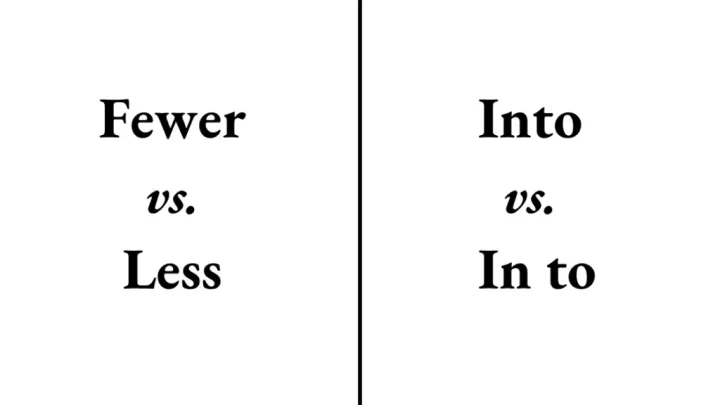
Many of us get into the habit of making writing mistakes either because of unawareness on our part or just mere sloppiness. Many of these mistakes affect the way readers perceive our pieces of writing; foolish typos can make the difference between a great first impression and a tainted one. We at The Language Nerds took the liberty to collect the most common mistakes that the majority of people tend to make and we want you to watch out for them so that there is nothing to worry about when you want to apply for your next job or when you want to email your boss. So let's see what we've got!
1. Fewer vs. Less
This one is tricky but easy to avoid. Use fewer when you can count the number of things being discussed. "Fewer than the required number of people passed the test." Use less when describing intangible concepts, like time. "It took me less time to complete the paper."
2. Which vs. That
This one is not entirely easy to spot. There are two ways to remember whether to use which or that in a sentence.
First, if you can remove the phrase and not change the meaning of the sentence, use which; if you can't remove it without changing the meaning of the sentence, use that. You can dump the "whiches". Let's see this in examples. "The report, which contained several lovely images, was well received." Take out "which contained several images" and the sentence still makes sense. But, in this second example: "Reports that contain images are more easily understood." Take out "that contain images" and this sentence doesn't make much sense.
Another simple way to look at this is if the phrase is offset by commas, it should contain which. If you don't need commas, it can be that.
3. Into vs. In to
If you think that into is just a combination of in and to, you are mistaken, as was I. Into always indicates movement. "I walked into the office twenty minutes late." In and to, however, can be used in lots of different ways that have no relation to movement. "I was called in to go over the reports."
4. Like vs. Such as
In conversational, spontaneous speech, we use like for pretty much everything. But technically, it's not always correct. When you use like, you are comparing two things that are alike. For example, "My stupid dog barks like every other dog." But when you are giving examples, you should use such as: "My stupid dog has many annoying qualities, such as his tendency to bark loudly late in the night."
5. Me vs. I
This is a classic mistake. Many people get confused about when to use me and I. Both are pronouns, but one is used when it's the subject of a sentence - the one doing the action - and the other when it's the object - the one being acted on.
If you say, "I love cake" the word I is the subject, and cake is the object. Unless you are Cookie Monster, you would never say, "Me love cake." If you say, "Cookie Monster loves me." the word me is the object, the thing being loved. The same goes for her and him and they and them. One case that trips people up is the phrase, "Between you and me" or "Between him and me." In this case, between is a preposition (like up, on, at, or around) and the pronouns are the objects of that preposition, so it is correct to say me instead of I.
6. Advise vs. Advice
To advise someone is to give them advice. Advise, with an S, is the verb, while advice, with a C, is the noun. To avoid this mistake remember that advisors advise; it helps to remember which is the verb. (A note of advice: as I was writing that previous sentence, Grammarly and spell check marked "advise" as incorrect! So even the grammar checker can be wrong in this one.)


















Comments